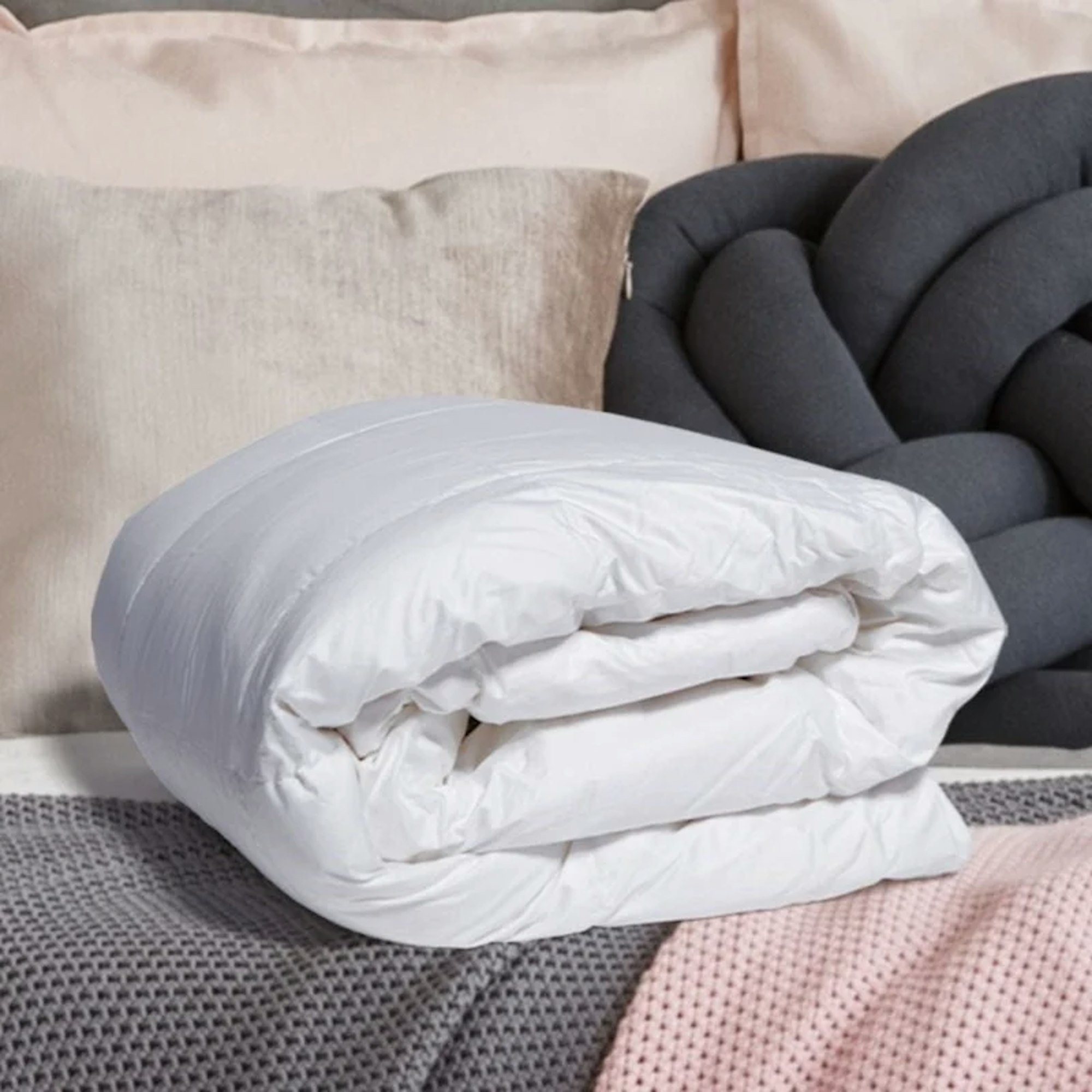How to Properly Wash Your Quilt

Keeping your quilts and their covers clean is not just a matter of maintaining a neat bedroom; it's also about ensuring your sleeping environment is hygienic and comfortable. However, washing a quilt is not as straightforward as tossing it into the washing machine with your regular laundry. It requires a gentle touch and a bit of know-how to maintain its integrity, colour, and shape.
Why Should You Wash Your Quilts and Covers?

1. Remove Sweat and Grime
Our bodies naturally produce sweat and oils, which can seep into our bedding. Over time, this can lead to the buildup of grime, making your quilt and its cover less fresh and potentially lead to skin irritations. Dust mites and other allergens also tend to accumulate in unwashed bedding, which can exacerbate allergies and respiratory issues for some people.
2. Re-Fluff Them
Washing your quilt can help redistribute and fluff up the filling, whether it's down, wool, or a synthetic alternative. The agitation and rinse cycles in the washing process help to separate and lift the fibres or down clusters, allowing them to expand back to their original fluffy state. This ensures your quilt stays warm, comfortable, and able to provide even insulation.
How Often Should You Wash Your Quilt?
Generally, it's a good rule of thumb to wash your quilt once per year. This frequency is sufficient to keep it clean without causing unnecessary wear and tear. However, if you have allergies or spill something on your quilt, you may need to wash it more frequently. For quilts that are primarily decorative and not used as often, extending the time between washes to once every two years could be acceptable. Always follow the care instructions specific to your quilt's material to ensure it remains in good condition over time.
How Often Should You Wash Your Quilt Cover?
Quilt covers should be washed more frequently than the quilt itself, ideally every 1-2 months. Since the cover directly contacts your skin and absorbs most of the sweat and oils your body produces, regular washing is essential for maintaining a clean sleeping environment.
If you have pets that sleep on your bed or if you often eat in bed, you might need to wash your quilt cover more frequently, possibly every 2-3 weeks, to remove pet dander, hair, and food particles.
How to Wash Different Quilt Types

The method for washing a quilt largely depends on its material. Always check the manufacturer’s instructions for proper care.
1. General Wool
Most wool quilts can be machine-washed on a gentle cycle with cold water and a mild detergent. It's important to use a front-loading washer or a machine without an agitator to prevent damage.
2. Down
Down quilts can also be machine-washed using a mild detergent. Opt for a gentle cycle and cold water. When drying, avoid using high heat, as it can damage the down. If necessary, air dry the quilt for the final phase to ensure it's thoroughly dry before use, as damp down can develop mould.
3. Microfibre
Microfibre quilts are perhaps the easiest to care for, as they can be machine-washed and dried without special considerations. These fibres are extremely fine—much finer than a strand of silk—and are very durable materials that can withstand repeated washings without losing their shape or texture. While microfiber quilts are low-maintenance, it's always best to follow the specific care instructions provided by the manufacturer, as there can be variations in fabric composition and treatment.
4. Alpaca Wool
Due to its delicate nature, alpaca wool quilts should generally be dry-cleaned to avoid shrinking and damage. Alpaca wool is a luxurious, soft, and durable fibre known for its thermal properties and hypoallergenic nature. However, despite its durability, alpaca wool is still a delicate material. For a quilt, which is a large and potentially cumbersome item to clean, dry cleaning is often recommended to ensure it is handled properly and without risk of damage.
How to Wash a Quilt Cover?
Quilt covers, being less bulky and often made of more durable materials, can usually be washed in the machine or by hand.
- Use a gentle cycle with cold water and a mild detergent for machine washing.
- If hand washing, make sure to rinse thoroughly to remove all the soap.
- You can tumble dry on a low setting or line dry your quilt cover to keep it fresh and ready for use. Before washing, make sure to check the manufacturer’s guide for care instructions.
Maintaining the cleanliness of your quilts and their covers is crucial for a comfortable and hygienic sleeping environment. By understanding the specific needs of different types of quilts, you can preserve the quality and longevity of your bedding while enjoying a fresh and cosy sleep night after night.
Explore our wide selection of quilts and quilt covers at MyHouse. Find your dream quilt for a cosy night’s sleep now!
Back to blog


